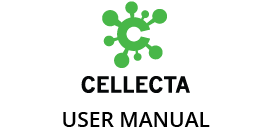Use of the CRISPRtest assay requires access to a flow cytometer with the following excitation and emission requirements:
| Flow Cytometry Settings for TagRFP | |
|---|---|
| Excitation: | 561nm (yellow laser) [530nm laser is still acceptable] |
| Emission: | 590/20nm band-pass filter, or similar |
| Flow Cytometry Settings for TagGFP2 | |
| Excitation: | 488nm (blue laser) |
| Emission: | 530/20nm band-pass filter, or similar |
| Flow Cytometry Settings for TagBFP | |
| Excitation: | 405nm (violet laser) |
| Emission: | 470/20nm band-pass filter, or similar |
Cellecta also offers the following products that may be useful when running this assay:
- Cas9 and dCas9-Variant Cells and Constructs
- Positive Control Cell Line
- Cas9+ MDA-MB-231 Cells may be run in parallel with your target cells as a positive control for the assay.
- Transduction Control Virus
- Non-Targeting CRISPR Control virus (e.g. sgNT in pRSG16-U6-sg-UbiC-TagRFP-2A-Puro) may be used to assess transduction efficiency of the target cells.
Non-targeting controls in other Cellecta vectors are available. Please visit our CRISPR Non-Targeting sgRNA Control Construct in Standard Lentiviral Vector web page.
Other than the specific reagents and instruments listed above, the protocols assume the user has access to standard materials (e.g., polypropylene tubes, pipette tips), equipment (table top centrifuges, pipettes, scales), and common reagents (e.g., TE buffer, ethanol) and buffers used in a typical life science laboratory.
Need more help with this?
Contact Us

